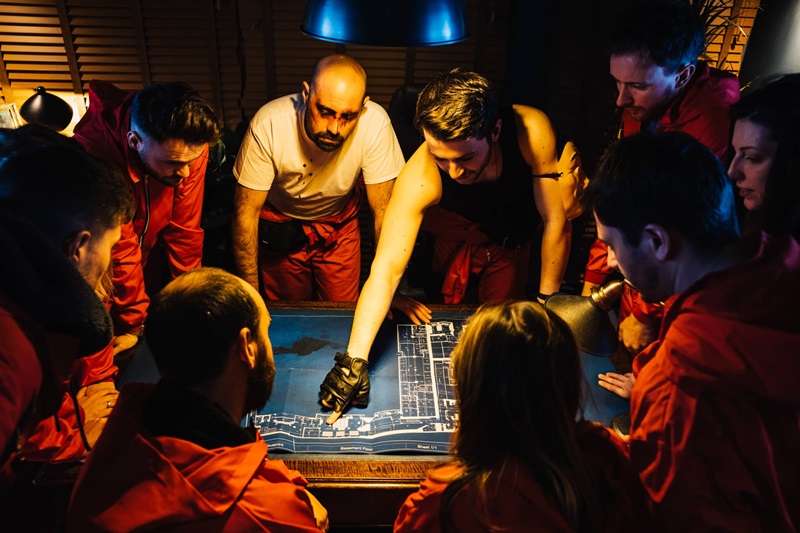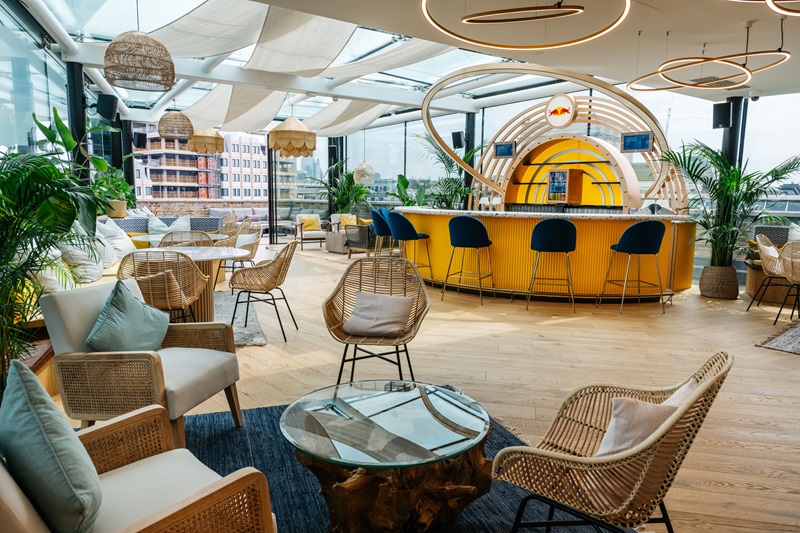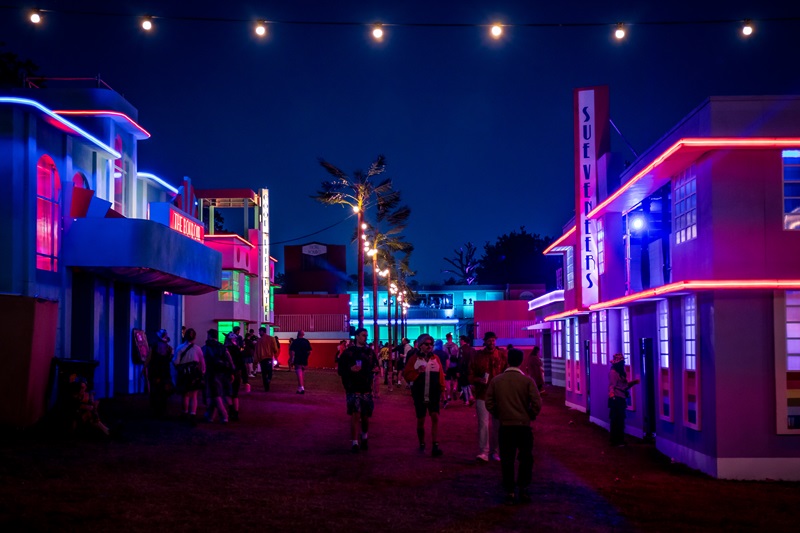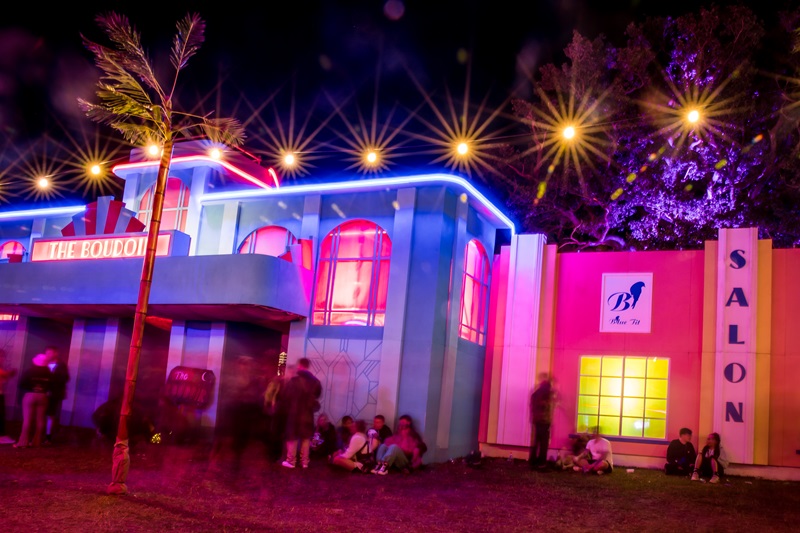
In the ever-evolving landscape of experiential design, pop-up experiences have emerged as powerful tools for creating memorable and immersive encounters. From museums and art exhibits to retail spaces and theme parks, the versatility of pop-ups has captured the attention of various industries, making them a go-to strategy for launching new products, fostering collaborations, and fostering authentic human connection.
The Rise of Pop-Up Experiences
The roots of pop-up experiences trace back to the attractions industry, where temporary installations and seasonal offerings became integral to engaging audiences. Today, pop-ups have transcended their initial retail-focused reputation and expanded into a diverse array of sectors, including music, film, and start-ups. Their ability to offer a unique, time-limited experience has positioned them as a dynamic medium for creating a buzz and making a lasting impact.
The UK has witnessed a pop-up revolution, with the industry now valued at over £2.3 billion. What was once considered a fleeting trend has grown into a formidable business strategy. Beyond its initial association with retail, the pop-up has become a strategic powerhouse for those seeking to launch products, form collaborations, and strategically curate brand narratives for specific purposes.
In this guide, Natasha Mortimer, Managing Creative Director of Imagineerium, shares her insights on perfecting the art of the immersive pop-up experience. Natasha’s extensive experience in the field makes her a valuable source of knowledge for experiential designers looking to navigate the complexities of crafting impactful and memorable immersive pop-ups.
Crafting the Guest Experience
Determining the guest experience is the most important aspect of planning an immersive pop-up as it will impact what elements you bring into the experience. This can include things like, how much participation you’ll need from visitors, whether the pop up is something they can walk within or admire from afar, or whether the experience includes many interactive elements that helps the narrative to unfold.
The guest experience should always start with the very beginning, think pre-event. This could start with an email campaign, personalised invite or social media campaign. You then need to think how you want your guests to feel when they first arrive. This is when your visitor will first come across (or stumble upon in some cases) the experience. What is going to catch their attention and make an impact straight away? The second part is how does the visitor then interact or react with the pop up – do they have to follow a certain path, are there puzzles or questions they need to answer before moving into the next part? All of these questions help to establish the fundamental journey each visitor will go on. Lastly, how does the visitor leave the pop-up, what is going to make them remember the experience, and want to either do it again or tell their friends and family.
We designed ‘Money Heist: The Experience’ which took inspiration from the global hit Netflix show. We wanted to create a temporary experience that would have a big impact, therefore, building the concept around a strong guest journey was key.
Participants weren’t just visitors, they became active contributors to the unfolding narrative. Visitors were ‘taken hostage’ and given tasks to complete to help them escape with all the gold. This narrative was guided through immersive theatre and live gaming techniques, where live actors were used to interact with visitors throughout the experience. There were four different escape rooms, one in a security office, in a workshop, in an antiques office and one in an art repair lab. Visitors were split up into smaller groups so that they only completed one escape room each. There were hidden clues, and items each team had to find to move onto the next part of the experience. In another room players needed to hide from a security guard whilst trying to find dynamite.
We went to great lengths to craft an immersive journey that mirrored the suspense and intrigue of the iconic series. Every detail, every nook and cranny, was designed to create an atmosphere of mystery and excitement. One of our key design principles was to ensure that the exit into the next space was not immediately obvious. We wanted to ensure the transitions to and from spaces were either smooth or harsh depending on how we wanted the audience to feel. We made sure each room had its own unique aesthetic to make the audience feel as though they had made their way through various chapters in the narrative.

To achieve this, we took into account the different room sizes and used a combination of lighting settings, decor and textures. Throughout the experience, we kept visitors on their toes, mirroring the suspense that is portrayed in the show. Some spaces featured multiple doors, leading to a sense of uncertainty and decision-making reminiscent of the heist scenarios. Others were secret doors that were cleverly concealed, resembling hidden bookcases or seamlessly integrated into the walls, offering an element of surprise.
Aligning Business & Creative Goals
A successful pop-up is more than just eye-catching aesthetics, it’s a strategic fusion of creativity and interaction. Each pop-up needs to reflect the brand’s essence while resonating with the intended audience.
The seamless integration of creative elements with strategic business goals is what sets exceptional ventures apart. A pop-up that succeeds not only captures attention but also strategically aligns itself with the overarching goals of the brand.

We designed and installed the ‘Sun Bar’ at Red Bull HQ in Covent Garden. This rooftop bar was a true reflection of the brand’s spirit, cool, fresh, modern and forward thinking.
The ‘Sun Bar’ encompassed the playful energy associated with the brand and was built to serve as a workspace, host VIP events and somewhere staff members could go for drinks after work hours.
For the design, we took full advantage of the generous 270 degree panoramic view of London’s skyline, and accentuated it through our choice of design. Throughout the build we stuck to Red Bull brand colours, using bold blue and yellow accents, and teamed this colourway with sleek furniture and lots of luscious indoor plants which gave the whole space a modern and fresh feel.
We also brought in elements of the Red Bull logo in the form of a sun around the main bar. Its bright yellow semi circular shape, copper arcs and feature halo ring light make it the focal point of the room.
Red Bull were very clear in their brief that they wanted to ensure their brand aesthetic really shone through so that it would feel like an extension of the office, but with a more premium feel. Getting to know the brand well and understanding their needs, really helped us ensure we stuck to the brief and brought their vision to life.
Strategic Location
At the heart of a pop-up lies its ability to attract and engage a target audience. Selecting a location with high foot traffic is a strategic move that ensures a broader reach and heightened visibility. Whether nestled in a bustling city centre or at a popular event venue, being in the path of potential visitors increases the chances of spontaneous engagement and discovery.
Understanding the environment you are working with and adapting it to fit the message is vital. It’s important to read the space you’re going to use and see how you can use it to your advantage, whether it’s indoors or outdoors, an enclosed space or somewhere with square footage. The size, shape, location of your space will all have an impact on the experience you are trying to create.

A good example of this is the pop-up ‘mini city’ we created for El Dorado festival inspired by the art-deco style of Miami Vice. The experience included 8 building facades (6 venues, a bar, toilets and an arena stage) The venues included: Motel Dorado (arena stage), Blue Tit Salon, Good Life Hotel, The Diner, The Boudoir and the LGBTQIA+ venue, Sue Veneers.
The ‘mini city’ was in the heart of El Dorado leading on from the main food court which was hard to miss, giving festival goers a chance to explore the space.

We built each of the venues meticulously so that each would fit into a coherent landscape, designed not just as standalone structures but as interconnected elements within a larger immersive environment. Each of the street facades were built situated back and forth from the main street, this helped to create the illusion of a real street of buildings.
Each building was carefully crafted to encourage festival-goers to step up and wander in and around each structure, unlocking layers of experiences within the small city we had created. Palm trees lined the centre pathways, with each angle and viewpoint meticulously designed so that the experience continued, never breaking the illusion to ensure full escapism.
The ‘mini city’ served as a bridge, seamlessly connecting the pop-up venues with the main festival site. This architectural set-up wasn’t just a collection of structures, but a dynamic space that facilitated a seamless visitor journey for attendees, enhancing the overall festival experience.
We designed both entrances to the street so that they were visually appealing, grabbing the attention of festival goers as they passed by. To achieve this we used bright pastel colours and neon lights and had performers on various platforms and balconies.
The pathways and interconnected spaces within ‘Vice City’’ were purposefully designed to guide visitors through a curated journey, fostering a sense of exploration.
Interactivity
Interactivity is a key element in creating successful pop-up experiences as it enhances user engagement by providing a more dynamic and participatory experience.
Interactivity can be created through integrating VR/AR, gamification, touch screens and 5D experiences. Whether solving puzzles, making choices, or experiencing multisensory stimuli, interactivity transforms the pop-up into a communal adventure where every participant becomes an integral part of the unfolding tale. This engagement not only captivates but ensures that the pop-up experience lingers in the visitors memory, leaving a lasting connection between the audience and the narrative they helped bring to life.
Ultimately, the mastery of pop-up experiences lies in the ability to transform a moment into a lasting impression. By mixing creativity with business, experiential designers can elevate pop-ups from temporary novelties to influential touchpoints that shape brand perception and foster meaningful connections with the audience.
To find out more about Imagineerium’s work, check out their website: www.imagineerium.co.uk
A multi award winning experiential agency creating daring and immersive brand experiences that captivate audiences and drive ROI.
You need to load content from reCAPTCHA to submit the form. Please note that doing so will share data with third-party providers.
More Information